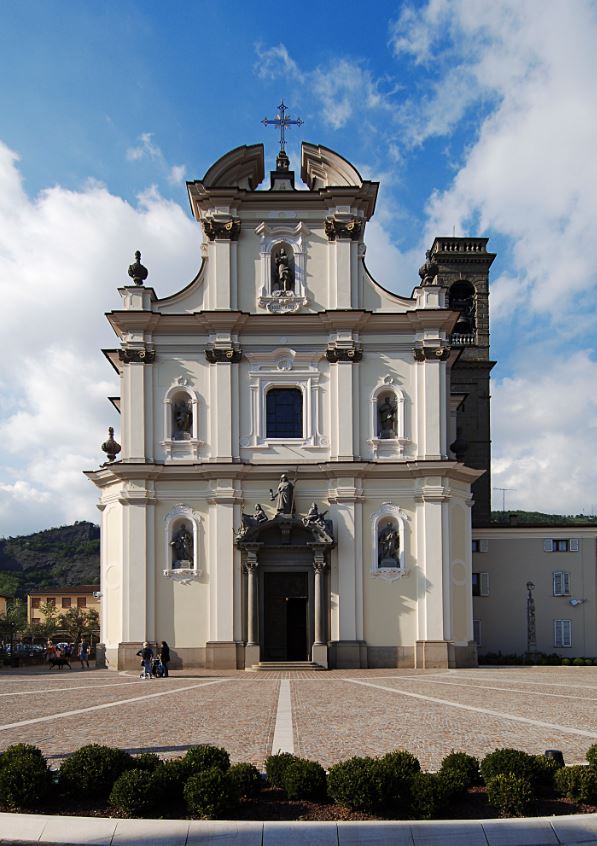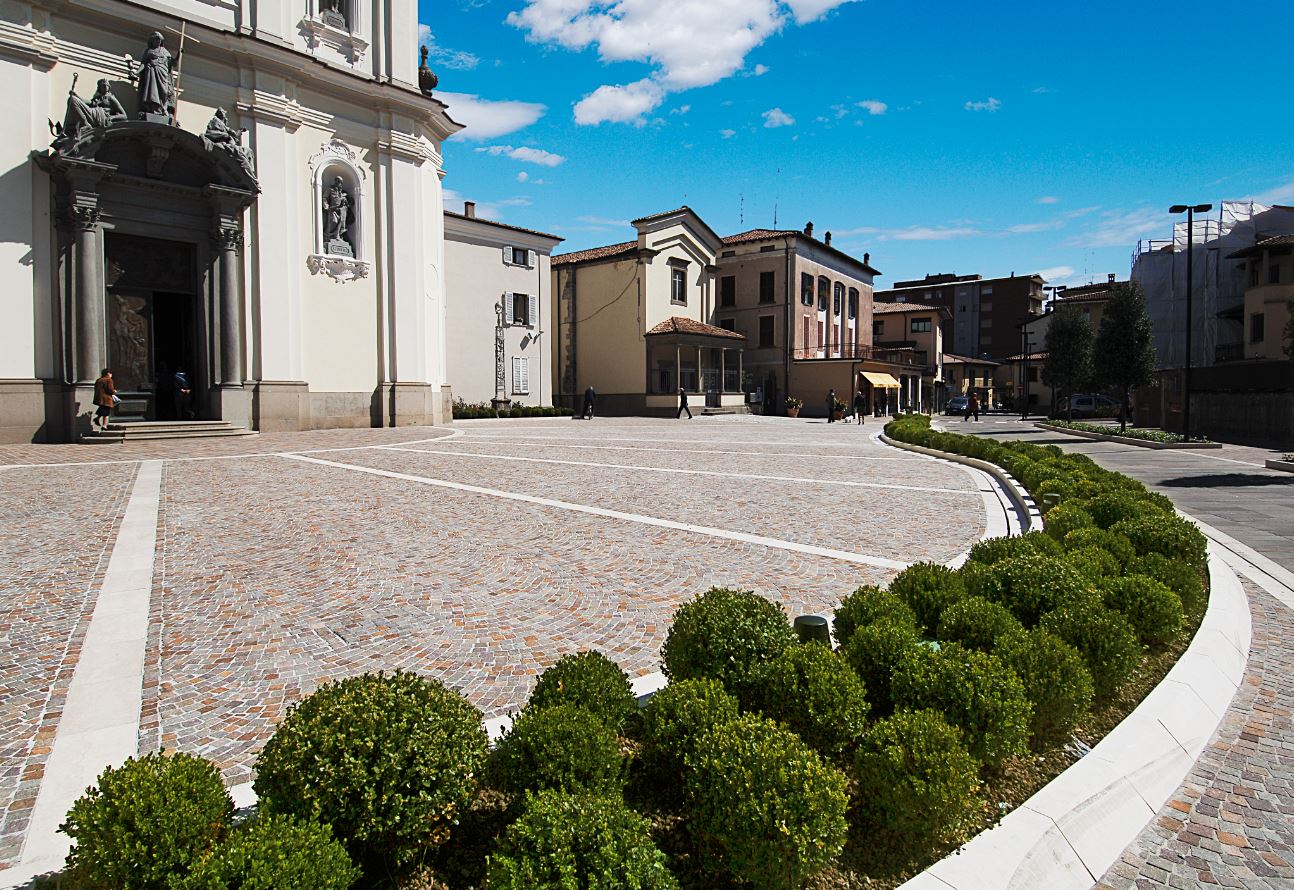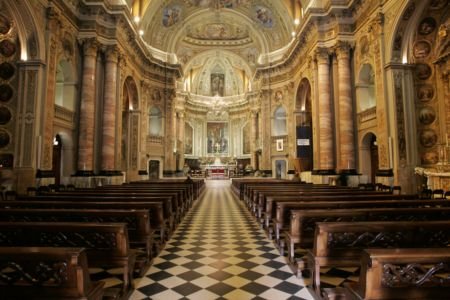



Church of San Martino
The ancient parish church of Sarnico, erected in Medieval times and restored in the early decades of the 16th Century, was demolished in 1727 to make room for the new larger and brighter building, in order to face the needs of the growing community.
Architect Luca Lucchini, originally from Ticino but that moved to Bergamo at an early age, designed the current structure preserving the old façade, integrated in the new side elevation, maintaining the solid base of the bell tower built in 1592 and raised in 1869. After five years, the parish church opened its doors, even if lacking decorations and the façade, which was completed in 1777 upon design on an unknown architect.
The façade of the church of San Martino (St. Martin) is one of the most slender examples of façade in Baroque style in the Sebino area; the frames and pillar strips overhanging two different levels, the three levels progressively reduced of the front and curved and broken gable, confer great vertical slenderness to the whole; the niches with statues of patron saints and the rich portal underscore the architectural flow of the ensemble, with an elegant chiaroscuro effect. The mouldings in Sarnico stone are a key element in parish churches of the Lombardy area. The sculptures of the façade were conceived by the workshop of Giovanni Sanz, one of the most renowned Lombard sculptors of the 18th Century, author of the wooden choir of Cappella Colleoni (Colleoni Chapel) in Bergamo, who worked in the Sebino area for the parish church of Santa Maria Maddalena (St. Mary Magdalene) in Tavernola.
The inspiring principles of the artist from Ticino Lucchini are clear in the church, and further detailed in the parish churches of Cene and Nembro, characterised by a layout soberly moved in the perimetric lines and a large and bright nave featuring slightly deep side chapels. In Sarnico, the central bay is slightly deeper compared to others, thus conveying a highly roomy effect.
The restoration and upgrading works of the parish church continued during the 20th Century. Between 1903 and 1909, plaster artisan from Lodi Aristide Secchi redefined the general decorative layout of the church, with inserts, frames and statues that reinforced in clearly Baroque style, the more sober layout wanted by Lucchini two centuries earlier. In addition to the gilding works and perimeter friezes, Secchi also restored the 18th Century frescos, bringing substantial changes; the overall intervention unified the interior but compromised the original paintings by Francesco Monti that emerged only recently, after a long and painstaking restoration. The painter from Bologna had painted the four Evangelists in the central dome and the four Virtues in the sanctuary dome (1753-1754); well documented by sources from Brescia, they constitute a marvellous example of sober and bright Baroque that was appreciated by the Venetian provinces of Terraferma (hinterland territories).
The prestige of the work in the parish church is confirmed by the painters who were commissioned the paintings of the altars and chapels. The high altarpiece is one of the masterpieces of Bergamo by Venetian artist Francesco Capella, referred to his late activity (1765-1770 circa); it depicts St. Martin the Bishop with the Emperor Valentinian and bears witness to the success that Tiepolo art, well known by Capella, achieved in Bergamo area after the interventions in Cappella Colleoni.
St. Francis in Ecstasy supported by Angels, dating back to the 1630s, is a beautiful restored painting by Giovan Battista Discepoli, also known as the Cripple of Lugano, which reveals the strong pathos developed by the artist in contact with the Milanese art in the previous century.
The great altarpiece with Madonna and Child and Saints Charles Borromeo, Francis, Bernardine and Martin by Francesco Cavagna in the third chapel on the left comes from the first parish church, and dates back to the early decades of the 17th Century.
The frontal of the high altar in white marble (1715) and gilded wood Madonna and Child on the altar of the Rosary are the work of Andrea Fantoni and his workshop.
Fiorenzo Fisogni
For more information:
VOLPI A., Miscellanea storica, Sarnico (Bg) 1979.
NICEFORI F. (a cura di), Sarnico tra Ottocento e Novecento. Archivio storico comunale a carte scoperte, “I quaderni della biblioteca di Sarnico”, Sarnico (Bg) 2009.
Sebino. Guida illustrata del lago d’Iseo, a cura di ZANELLA A., Sale Marasino (?) 1975.












